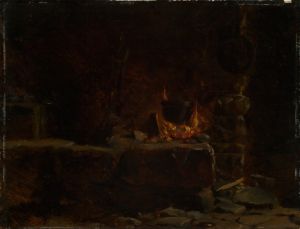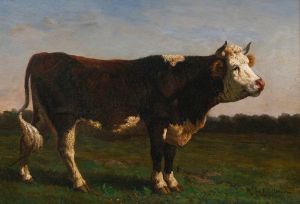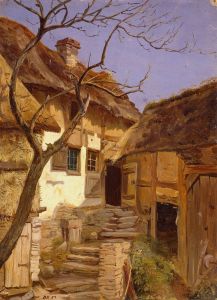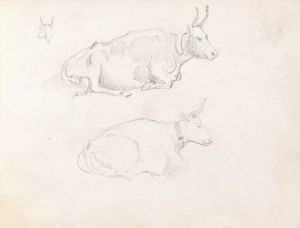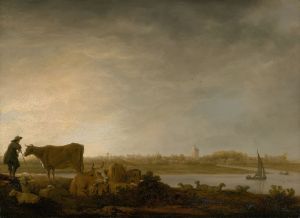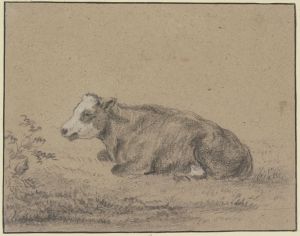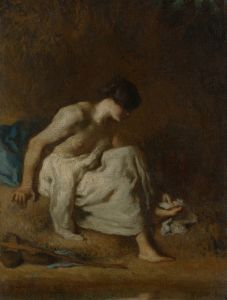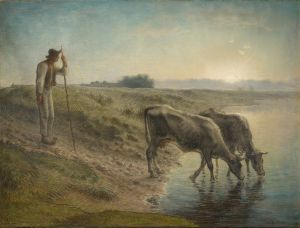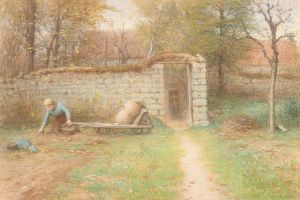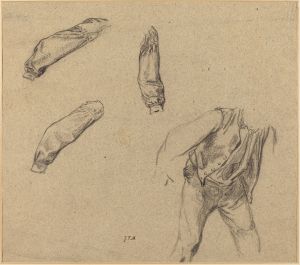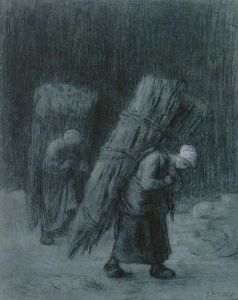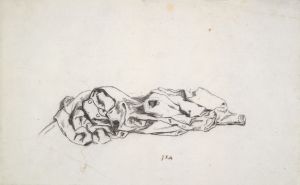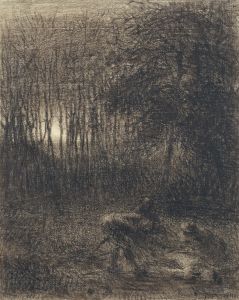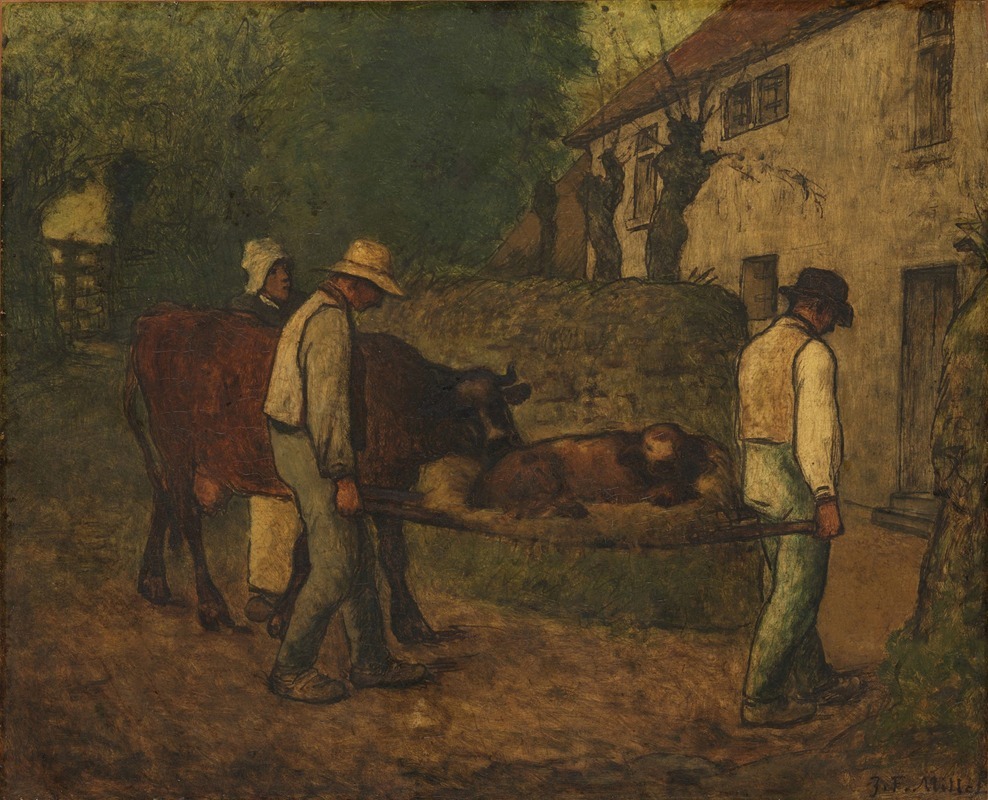
Bringing Home the Calf Born in the Fields, begun
A hand-painted replica of Jean-François Millet’s masterpiece Bringing Home the Calf Born in the Fields, begun, meticulously crafted by professional artists to capture the true essence of the original. Each piece is created with museum-quality canvas and rare mineral pigments, carefully painted by experienced artists with delicate brushstrokes and rich, layered colors to perfectly recreate the texture of the original artwork. Unlike machine-printed reproductions, this hand-painted version brings the painting to life, infused with the artist’s emotions and skill in every stroke. Whether for personal collection or home decoration, it instantly elevates the artistic atmosphere of any space.
Jean-François Millet, a prominent French painter and one of the founders of the Barbizon school, is renowned for his depictions of peasant life and rural landscapes. One of his works, "Bringing Home the Calf Born in the Fields," exemplifies his focus on the everyday lives of rural workers and their connection to the land. Although specific details about this particular painting are limited, it is consistent with Millet's broader oeuvre, which often highlights themes of labor, nature, and the dignity of rural life.
Millet was born in 1814 in the village of Gruchy, Normandy, into a family of farmers. This upbringing profoundly influenced his artistic vision, as he was intimately familiar with the hardships and rhythms of rural life. His works frequently reflect a deep empathy for the peasantry, portraying them with a sense of nobility and respect that was uncommon in the art of his time.
The Barbizon school, with which Millet is closely associated, was a group of painters who settled in the village of Barbizon near the Forest of Fontainebleau in the mid-19th century. They were part of a broader movement towards realism in art, seeking to depict the natural world and everyday life with honesty and precision. Millet's contributions to this movement were significant, as he brought a unique focus on the human figure within the landscape, emphasizing the symbiotic relationship between people and their environment.
"Bringing Home the Calf Born in the Fields" likely captures a moment of pastoral life, a theme Millet explored in many of his works. His paintings often feature scenes of agricultural labor, such as sowing, harvesting, and tending to animals, which are depicted with a sense of solemnity and reverence. This approach was not merely aesthetic; it also carried a social message, highlighting the essential yet often overlooked contributions of rural workers to society.
Millet's technique was characterized by a muted color palette and a focus on composition and form, which lent his works a timeless and universal quality. His use of light and shadow was particularly effective in conveying mood and atmosphere, often imbuing his scenes with a sense of tranquility or introspection. This stylistic approach can be seen in many of his well-known works, such as "The Gleaners" and "The Angelus," which similarly depict rural subjects with a profound sense of humanity.
While specific information about "Bringing Home the Calf Born in the Fields" is scarce, it is reasonable to assume that the painting aligns with Millet's broader artistic themes and techniques. His works continue to be celebrated for their ability to capture the essence of rural life and for their contribution to the development of realist art in the 19th century.
Millet's legacy is significant, as he influenced subsequent generations of artists, including Vincent van Gogh, who admired Millet's ability to portray the dignity of common people. Today, Millet's paintings are housed in major museums around the world, where they continue to be appreciated for their artistic merit and their empathetic portrayal of rural life.





